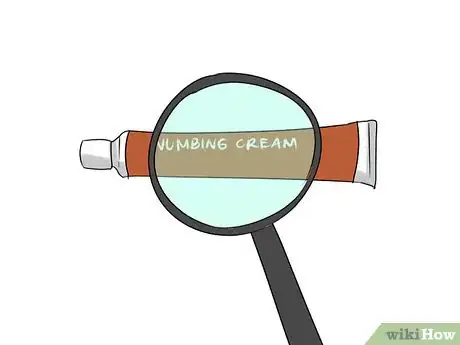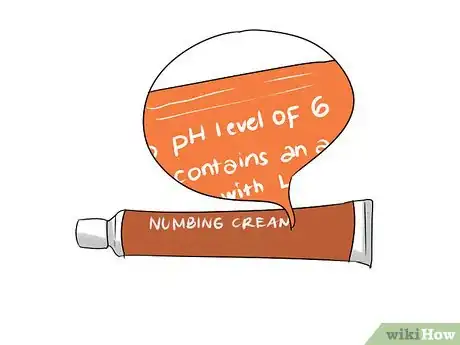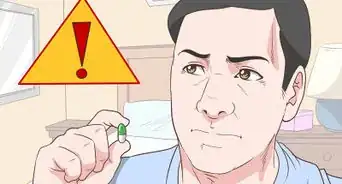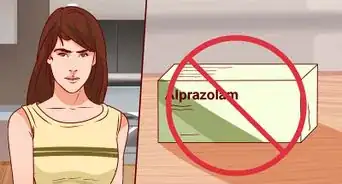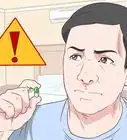wikiHow is a “wiki,” similar to Wikipedia, which means that many of our articles are co-written by multiple authors. To create this article, volunteer authors worked to edit and improve it over time.
This article has been viewed 97,330 times.
Learn more...
Getting a tattoo doesn't have to be painful. Advances in medical research have produced numbing creams that have been scientifically proven to greatly reduce, and sometimes completely alleviate, the pain of getting a tattoo. But beware, not all numbing creams claiming to reduce the pain of getting a tattoo contain the necessary ingredients to deliver on their promise. Here's what you need to know to select a numbing cream that actually reduces the pain of getting a tattoo.
Steps
-
1Identify the Active Ingredient. Topical anesthetics are medications that decrease the sensation of pain and itching when applied to the skin. Numbing creams sold to reduce the pain of getting a tattoo contain one of these two active ingredients: Lidocaine - an amide-based topical anesthetics.Benzocaine - ester-based topical anesthetic. Over the past seventy years, numerous scientific studies and medical research have confirmed that numbing creams containing Lidocaine are the most effective in reducing pain associated with getting a tattoo.[1]
-
2Understand the Difference Between Lidocaine and Benzocaine.
- Lidocaine is the most effective of the amide anesthetics. Lidocaine’s superior pain-reducing properties are evidenced by the fact that dermatologist use Lidocaine exclusively to numb the skin prior to performing a procedure.[2] In addition, because Lidocaine has a pH in the acidic range less than 7,[3] it does not alter the skin’s surface characteristics. In other words, Lidocaine does NOT cause swelling or exfoliation of the epidermal or dermal layers. When you use a Lidocaine-based numbing cream prior to getting a tattoo, you can rest assured that your tattoo’s design, shape, and color will not be altered by the use of the Lidocaine numbing cream.
- Benzocaine, an ester anesthetic, has been medically proven to provide no pain relieving properties when applied to skin.[4] Ester anesthetics reduce pain only when applied to “mucous membrane” areas of the body, such as the gums, inside the cheeks, and the anus. Benzocaine’s specific pain reducing benefit is evidenced by the fact that it is used by dentists and proctologists. So, unless you want to get a tattoo on the inside of your lip or on another mucous membrane, you have no need to purchase a numbing cream containing Benzocaine as its active ingredient.
Advertisement -
3Purchase a Numbing Cream with a pH less than 7. Clinical evidence suggests that topical anesthetics that have a pH in the alkaline range greater than 7 should not be used as a numbing agent for tattoos. Alkaline agents alter the surface properties of skin and, therefore, have the potential to alter the pigment and ultimately the tattoo’s color.[5] A numbing cream that alleviates the pain of getting a tattoo, but leaves you with a tattoo which is distorted or dull defeats the purpose of getting a tattoo. It is not always easy to discover a numbing cream’s pH.
References
- ↑ https://www.ncbi.nlm.nih.gov/pmc/articles/PMC4107876/
- ↑ http://www.odermatol.com/odermatology/20183/7.Topical-ZdybskiJ.pdf
- ↑ https://academic.oup.com/asj/article/32/4/495/350514
- ↑ https://www.webmd.com/drugs/2/drug-168233/pain-relieving-benzocaine-topical/details
- ↑ http://www.cosmetictattoo.org/article/topical-anaesthetics-cosmetic-procedures.html
